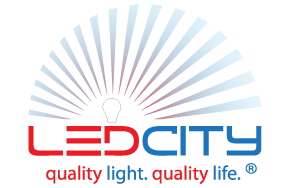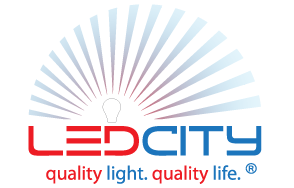LED Lighting for Retail

Retail covers a very wide spectrum of establishments. From a large supermarket to a fashionable and exclusive fashion outlet; from a high-end jewellery store to a hipster book shop, each has its own unique look, feel and character.
Because of that, they have very specific requirements when it comes to the building, fixtures and fittings and of course the lighting. How the store is lit plays a massive part in the whole shopping experience. It will be a major factor in determining the shoppers’ first impressions, which more than likely will then affect the mindset of that shopper – how long they stay in the store and ultimately how much they spend. Lighting is a major contributory factor in how welcoming an outlet is, and how relaxed, invigorating or embracing the ambience is inside.
Therefore, making sure you have the appropriate types of lighting, set up correctly in the optimum positions will have an enormous effect on the success or failure of the store, as it has a very real and proven influence on sales and brand loyalty.
When choosing the lighting installations for a retail establishment there are several considerations that you need to take into account.
Retail Lighting Objectives
Simply put, there are four objectives that retail lighting needs to achieve:
Attracting Attention
The first objective is to get people into the store in the first place. The lighting needs to make the store look welcoming and distinctive from the outside, a beacon that makes the casual shopper feel that they would rather be inside than where they currently are. At the same time, it has a practical element. It is essential that customers are able to read any signage; that displays and offers are easily seen, and that the entrance to the store is obvious and highlighted.
Helping with the Buying Decision
Once inside, there needs to be as few obstacles – physical and emotional – as possible. The lighting should help the customer to make their way easily and effortlessly around the store. There needs to be sufficient illumination for shoppers to see and read all sales and marketing information and to read the labels and price tags on items. The lighting should also display the merchandise in the best possible manner, bringing out the individual characteristics, details, textures and colours. Where it is relevant, other areas of the store such as fitting rooms also need to be lit suitably, so that the customer is able to make an informed buying decision in the light that is appropriate to the item’s use.
Removing the Final Hurdle
Once the buying decision has been made, the lighting needs to help make the transaction as quick and simple as possible. It should be used to enable the customer to easily locate the sales register, while the sales assistant needs good quality lighting to ensure that they can complete the process, operate the till, wrap the item and handle the credit card/cash with ease.
Customer Experience
Even if the customer went into the store with a specific purpose in mind, their experience in the store is a huge factor on how long they stay and whether they will return. The quality of the lighting plays a large role in that experience. As well as creating a pleasant environment, other practical considerations need to be taken into account, such as if there is a bathroom, that needs to be lit correctly, as does the route to and from it. If the lighting has been done correctly, it is less likely a customer will come back for the wrong reason – to return a purchased item that they weren’t able to evaluate correctly in the store – and a lot more likely they will return for the right reasons.
Lighting for Specific Retail Spaces
The nature, quality, quantity and method of lighting that is used in a retail setting will depend on many different factors. The type of merchandise that is sold is the overriding one, as this more often than not has a knock on effect to the type of building, the outlet it is housed in, and the nature of the environment that is required.
It is rare that an establishment will feature just one kind of lighting. Almost all of the time, retail premises will use a combination of general lighting, ambient lighting, task lighting and accent lighting to achieve the desired, multi-layered effect. The installations provide a diffuse, uniform layer of brightness throughout the store.
Though each location will have its own requirements, the following are guidelines that should be used as a base when deciding on the lighting installation for each specific type of retail outlet.
Mass Merchandisers and Supermarkets

These tend to be located in large open spaces, and are more often than not self-service, requiring a consistent, uniform light, bright enough for the customer to read the print on labels and sales promotions. Shadows are not wanted, and the overall brightness (typically 450 to 650 lux) is higher than in other retail premises.
General lighting is used throughout the store, provided by downlights and/or panel lights. These give a broad distribution of light, and should be arranged at regular and symmetric intervals throughout the entire store. Spot lights or track lights can then be used to provide accent lighting where it is required for special displays, though because the overall lighting is brighter the effect will be less dramatic.
Designer Fashion and Specialist Stores

Here the overall look and feel of the space are as important as the need for illumination. Ambient light levels tend to be around 60% of those for supermarkets, and shadows and variance in lighting are often encouraged to give the store more depth, and create a more elegant, welcoming and relaxing ambience. Ambient lighting is used, but these tend to come in the form of wall lights, bulbs or strip lighting, so the effect is not as uniform as when used in supermarkets. The fixtures are often decorative as well, making the installation part of the overall design and look of the premises. Because of the lower levels of ambient lighting (typically 250 to 400 lux), accent lighting works very well in these situations.
Spot lights and track lights are used for accent lighting, where they are used to guide the shoppers’ attention to certain displays and products. Accent lighting in this instance is very good for picking out and emphasizing certain aspects of the products, such as its colour, texture or specific design features. They also serve to differentiate it from other areas of the display/store.
Book shops fall into this category to a certain extent. The overall feel is usually a relaxed environment, though the lighting needs to be of a sufficient quality so that customers are easily able to browse and read the titles, and the contents.
Depending on the building, architectural lighting can be used to highlight certain areas of interest, and to add to the overall feel of the space. Wall washers work well in this situation.
Jewellery and Watch Stores

These tend to be smaller outlets, where higher levels of general or ambient lighting are used (typically 400 to 600 lux). The merchandise is housed in cabinets, so as a rule, the accent lighting used to display these is provided by strip lights, though track and spot lights can also be used depending on the display and the size of the cabinet.
Other Considerations
As has been hinted at earlier, there is a lot more to lighting a retail space than providing illumination. To achieve the overall desired effects and impression, there are several other factors that need to be taken into consideration.
Uplighting and Uniformity
Uplighting is an important and popular technique in retail as it helps give a high level of uniformity. This is achieved by reducing the contrast between the light source and its surroundings. It also has the benefit of lighting vertical surfaces such as signage, while reducing both glare and shadows. The amount of uplighting that is used depends on the desired effect. A high percentage or total use of uplights gives a very diffuse light resulting in an open and airy feel to the space. Reducing the amount of uplighting used, to between 20 to 40 percent, has the effect of bringing the customers’ attention onto the goods displayed, without leaving the ceiling too dark.
Colour Rendering Index
This should not be underestimated as a merchandising tool. The Colour Rendering Index (CRI) is a measure of how a light source shows the actual colours of the products it is displaying. The closer this figure is to 100, the more realistic, natural and vibrant the colours of the merchandise will appear.
Colour Temperature
The colour temperature of the light source also needs to be taken into account, and the desired effect varies depending on the type of products on display. Measured in Kelvin (K), the higher the temperature the cooler or bluer the light; the lower the temperature, the warmer or more yellow the light appears. Normally a colder light is preferred in retail, but there are certain situations – grocery shopping or at meat counters for example, where a warmer light is beneficial.
Surface Characteristics
The nature of the walls, flooring and the merchandise itself will influence the overall lighting effect and has to be taken into consideration when designing the lighting installations. This can be used to your advantage, as matt or satin finishes can reduce glare. Alternatively, shiny surfaces, and saturated colours will pick up lighting, attracting the eye.
Glare
Highly polished or reflective surfaces within the retail space - such as domestic appliances on display, can cause unpleasant amounts of glare, negatively impacting the shoppers’ experience. Uplighting is a way of reducing this glare, as is ensuring that light is provided from as many sources and directions as possible. The addition of daylight can also help in this instance, if that is practical.










